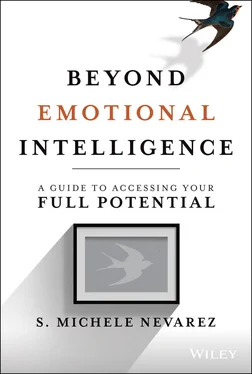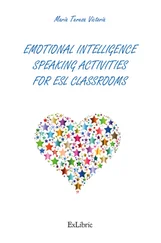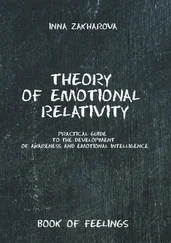The Tale of Two Emotions: Classical and Constructed
Emotions play a variety of notable functions in our lives, including elevating and drawing our attention to their signals. Like a carrier pigeon, our emotions transport salient messages between the brain and the body, forming a powerful feedback loop. The way the scent of a skunk dutifully follows its owner, our emotions forewarn of their approach in the form of bodily signals and affect as if to let us know they're on the premises. And like a skunk's musky trace, they leave a lingering impression you can almost taste. Emotions set a definitive tone, a palpable atmosphere to whatever is already present. As our emotions make themselves known, their valence and salience flood our bodies like the vibrant colors of a sunset we behold but briefly before its glistening rays of light suddenly fade to an icy blue gray.
Even though we've been trained to use single words to describe how we feel, words like happy, sad, mad, or glad, when pressed, we each define these words, as well as our experience of them, quite differently. The moment we look at emotions from the individual perspective of how we experience them, the way we describe them necessarily shifts away from single-word or one-dimensional descriptions. “Sad” is just a word we assign to an entire complex of sensory signals interspersed with mental impressions evoked in the process.
According to the constructed theory of emotions, in contrast to the classical view of emotions, emotions are created, not triggered. Moreover, they do not have unique fingerprints, footprints, or any kind of print for that matter, other than perhaps the subtle or not so subtle mental imprint they make on us as we experience them. Rather, there is wide variation in emotional expression from one person to the next and even between two instances of any given emotion, such as sadness, happiness, or fear. In this paradigm, the meaning our brain assigns our emotions ties predominantly to our learned behavior about them in various situations and contexts versus any kind of universal or primal existence in which we only need recognize them. In the constructed interpretation of emotions, they are conventions, reflections of the contexts we are a product of. The brain doesn't have an emotion manufacturing plant where emotions with identifiable characteristics are produced exactly the same each time in response to certain stimuli. Rather, when we experience emotion, it's more like your brain has called ahead, having already set into motion what it anticipates you'll need as you're about to tell your boss you're going to quit and go work for a competitor: “I'll take a venti, two-pump adrenaline, no foam courage.” But then when your boss unexpectedly breaks down crying and tells you the business can't possibly survive without you, your brain has already adjusted for your boss's cues, dialing in a more context-appropriate response: “Hold up! If it's not too late, I'd like to amend my order. I'll take a tall, two-shot pity, half-pump empathy, slightly forced smile, please.” Okay, so maybe an instance of emotion isn't quite like ordering your beverage of choice, but hopefully you get the idea. The brain isn't purely reacting to its external environment; it's predicting and adjusting, calibrating its perceptions as it goes, based on its prior experiences and what it perceives by way of sensory inputs in the moment.
Within the classical view, emotions have been carefully classified and categorized much like a dried-flower or bug collection. Each person—irrespective of culture, geography, upbringing, language, or context—comes prepackaged with a repertoire, an arsenal as it were, of emotions that are consistently experienced and unilaterally identifiable, bearing telltale physiological markers and facial expressions. In the classical understanding, emotions are triggered by external events, and we respond reactively based on a model of the brain as having specific regions that separately oversee our emotions, our higher-level executive center governing rational thought, and our fight-or-flight response mechanism, a throwback to our reptilian predecessors—each distinct area of the brain forever locked in a head-over-heart, stimulus-response tug-of-war. There is also the belief that through cognitive control alone we can bring our emotions under our obeisance, like spirits we summon at a séance, if we just try hard enough.
In contrast, in the constructed view of emotion, the brain constructs instances of emotion, drawing from prior experiences in similar contexts. Our brain casts its bets on what will happen next, setting into motion a response sequence before actually knowing what will happen next. As the brain calibrates its predictions with input from our interoceptive sensations and senses, it fine-tunes its perceptions and corrects for prediction error. In this view of emotions, they do not have an identifiable essence, nor are they universally distinguishable by certain facial expressions or biological markers. Instead, the interoceptive networks of the brain produce our perceptions and emotions through a process of degeneracy in which the brain relies upon different and varied core systems in the brain to produce instances of emotion. Words and concepts not only play a critical role in helping us contextualize and make sense of our perceptions and emotions, but they help us sync up with the experiences of those around us. In this manner, we arrive at a shared picture of reality in which we can effectively communicate with one another about what we perceive and how we feel. Through our brain's capacity for statistical learning and simulation, it dutifully constructs an emergent reality, including our perception of a self.
If indeed the meaning we assign our emotions take their lead from our prior experiences and expectations, shaped and reinforced by concepts that have been modeled for us time and again, then in my estimation we can become cognizant of the mental models influencing how we perpetually and habitually make sense of them. We can decide whether the initial meaning our brain has assigned is the interpretation we'll stick with as well as how we will choose to relate to our real-time sensory experience of our emotions. This prospect is both encouraging and daunting. Encouraging because it means we can unlearn what we were taught we should feel relative to what may be culturally or contextually appropriate in any given situation, and daunting because that's potentially a lot of unlearning we may need to undertake to retrofit and cultivate the kinds of experiences that are more conducive for our aims. Regardless of whether we ascribe to the classical or constructed view of emotions, the end result is mostly the same from a practical standpoint. We still have to deal with how our emotions make us feel and be strategic about the sense we subsequently make of them. That said, the two theories do have varied implications for how we might go about working with our emotions and thus yield different strategies we might use to do so. If we think emotions are fixed, we have far less wiggle room when it comes to how we handle them. But if we know our emotions are constructed and more fluid, then we can assign them whatever meaning we like—that is, if we create the habit of doing so.
Where Does That Leave Us? On an Emotional Cliffhanger
Our emotions are more elaborate than they are simple. Irrespective of the mechanisms by which they arrive or what names we give them when they do, the bottom line is, emotions are a pervasive hallmark of our experience. Their presence acts as a kind of invisible yet palpable navigation system guiding our response. But because we can't see them nor are we fully versed in their detection or intervention, they often elude our conscious awareness and therefore our inclination to recategorize or reframe them. That is where the 12 Self-Discoveries come into play. They provide us with quick methods to spot when our interpretation of them is or isn't helpful, pointing out common mental pitfalls we may be succumbing to and remedies for when we do. Our mental outlook and what unfolds within our mind's ecosystem have a profound impact on us, not just physically but psychologically. What's more, our emotions impact how we make decisions and predispose the course of action we're likely to take as a result of how we interpret them. Thus, our real-time investigation of our emotions and ability to reinterpret or change our perceptual stance relative to them matters as much as our conceptual and scientific understanding of them. How we experience our emotions, the ways in which they color our outlook, shape our outcomes, and impact our relationships for better or worse mirror back to us the working state of our own emotional intelligence.
Читать дальше












